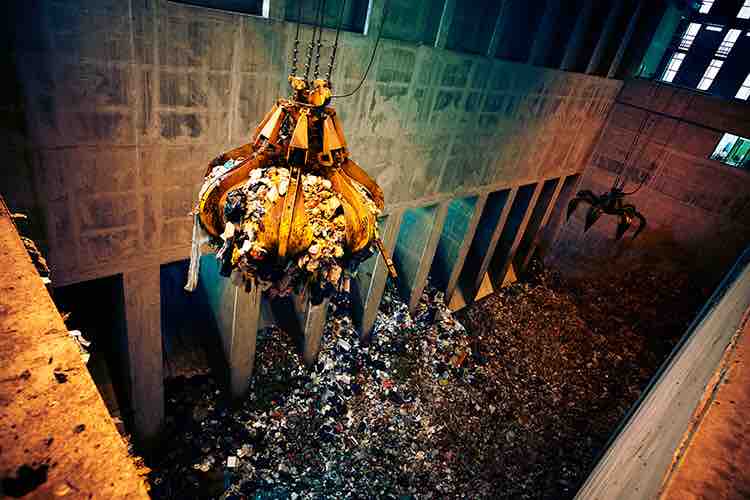Keppel Seghers Tuas Waste-to-Energy Plant (Keppel Seghers Tuas WTE Plant) is the first waste incineration plant in Singapore to be built under the NEA’s Public-Private-Partnership initiative and most efficient Waste-to-Energy Plant in Singapore.
TUAS, Singapore — To the casual observer, the expansive facility rising beside the coastline here could be mistaken for an industrial plant or power station. But the trucks constantly streaming in and out reveal its real purpose – processing a never-ending stream of the city-state’s trash.
RELEVANT SUSTAINABLE GOALS



This is the TuasOne Waste-to-Energy Plant, the latest and most technologically advanced addition to Singapore’s highly efficient solid waste management system. On a rare tour, we went behind the scenes to witness how the cityscape’s discarded packaging, food scraps and other detritus gets converted into a source of renewable energy.
“People are often surprised to learn that their household trash can be used to power their homes,” said Ong Xu Xian, an engineer with plant operator Mitsubishi Heavy Industries. “Instead of letting all that energy go to waste, we’re harnessing it.”
An Ingenious Waste Solution
With land scarce and no option for massive landfills, Singapore had to get creative about managing its 20,000 tons of daily waste. Its strategy: minimize recyclable waste at the source, incinerate what remains in high-tech waste-to-energy plants, and maximize energy recovery during that combustion process.
TuasOne is the city’s sixth and most advanced waste-to-energy facility, capable of razing 3,600 tons of trash per day fed by a continuous convoy of garbage trucks. The $670 million plant opened in 2021, a showcase of Singapore’s commitment to sustainable waste management.
During the tour, visitors gawked at the cavernous refuse bunker where those loads get discharged. Towering above, an industrial claw deftly sorted and transferred the trash into incinerator feed chutes – “like a giant claw machine game,” Ong joked.
The true alchemy occurs in the intense thermal furnaces, where temperatures reach a blistering 1,000°C (1,832°F). Aside from reducing mountains of refuse into an ash residue for disposal, the process also generates high-pressure steam to spin electricity-generating turbines.
TuasOne alone can produce up to 120 megawatts per day – enough to power over 240,000 households, per government estimates. Far from being an emissions scourge, its filtered flue gases are well within international air quality standards.
“It’s ingenious, really,” said Laura Chan, 28, a Singaporean tour participant. “Instead of wasting perfectly good energy from all our waste, they’ve turned it into something productive for the country while minimizing environmental damage.”
A Global Model?
While incineration has detractors concerned about air pollution and argues for prioritizing reduction over combustion, proponents counter that “energy recovery” is far preferable to letting emissions-heavy organic waste decompose in landfills. And as a densely populated, land-constrained city, Singapore has limited alternatives.
The government has aggressive targets to extend its waste-to-energy program and expand recycling rates. Its long-term strategy calls for achieving a 30% recycling rate by 2030 while doubling the lifespan of its sole Semakau landfill to 2035.
Singapore’s regional neighbors Malaysia and Indonesia have already begun emulating its waste-to-energy model, contracting with Mitsubishi and other firms to build their own incinerator facilities. Whether other dense global cities could replicate such a system remains to be seen.
“It’s not a panacea, as segregating waste at the source and minimizing consumption should still be prioritized,” said Pamela Low of the Singapore Environment Council. “But for a land-scarce city like ours, deriving value from trash is a necessity – and these plants show it can be done responsibly.”
As urban populations and waste volumes continue soaring, extracting energy from society’s discards may become an increasingly vital stopgap solution until a more sustainable circular economy takes hold.
“We like to say that Singapore’s only renewable energy source is waste,” said Ong. “So we have a duty to not waste that waste.”



